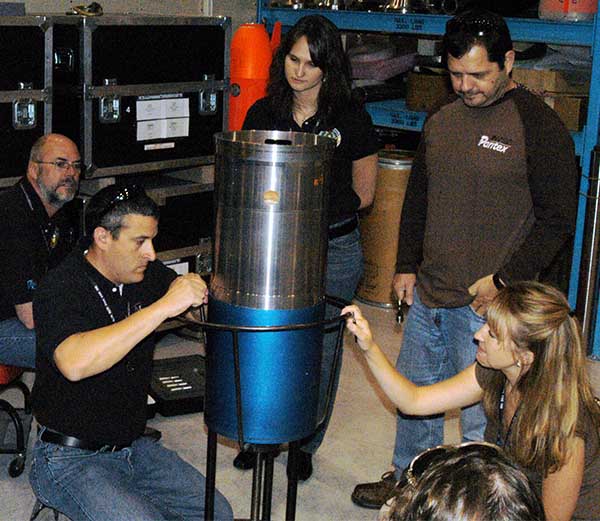Weapon Intern Program open for nominations for new class
Nominations are due July 14 for the upcoming Weapon Intern Program class, aimed at passing along decades of weapons-related knowledge to a new generation of nuclear weaponeers.
Sandia created the intern program in 1998 as a formal way to transfer weapons knowledge and experience and increase the understanding of those new to the nuclear weapons field. Since then, 423 people have graduated from the program and a new class of 21 is set to graduate Aug. 31. Graduates have come not only from Sandia, but also from NNSA, Air Force, Navy, Kansas City National Security Campus, Pantex, and other labs.
The next class, the 23rd since the program began, will start Sept. 25 and run for 11 months. For more information, go to the program’s website at wip.sandia.gov.

The ideal candidate has at least a bachelor’s degree — a graduate degree is preferred — in an engineering or scientific discipline and two to five years of experience in nuclear weapons, says Weapon Intern Program manager Larry Schoof (2236).
“It’s the only program of its kind in the Nuclear Security Enterprise, and most alumni of the program describe it as a ‘once in a career’ opportunity,” he says.
Graduate Alan Sonntag (9421) says the program gave him a better understanding of the roles and capabilities of Sandia departments and other sites. “The knowledge and networking gained in the WIP continue to prove invaluable to the work I do and make meaningful contributions to the US nuclear deterrent,” he says.
"Most alumni of the program describe it as a ‘once in a career’ opportunity."
And graduate Steven Trujillo (0151) says the experience “was clearly pivotal in my career. I feel that my ability to perform in each new job I’ve had can be traced to the breadth of instruction and understanding I received in the program.”
Program aims to develop technical leadership
Although many graduates move into management, the intent is to develop technical leadership, Larry says. Graduates have held leadership roles in the past few years in various Sandia nuclear weapons programs, including weapon system lead, product realization team lead, weapon control unit technical lead, Technical Basis Realization Team lead, Weapon Assessment Team lead, project lead, and arming, fuzing, and firing mechanical team lead.
The curriculum includes classroom lectures, briefings, numerous projects, and site visits. The visits reinforce classroom instruction and allow interns to see the overall nuclear enterprise, gain a greater appreciation of how each site contributes, see other perspectives, and appreciate what each site does within its constraints and requirements.
Interns spend six months in intensive classroom work covering nuclear policy and history, requirements, science and technology foundations, design and assessment, nuclear components, non-nuclear components, and systems. During the final five months, interns are embedded in Sandia organizations to work on nuclear weapons-specific projects. That gives them a chance to put into practice some of the concepts they learned in the first six months.
Each intern completes three classroom projects that reinforce lessons, help them develop depth and breadth in nuclear weapons knowledge, and develop networks vital to their career.
The program conducted two classes annually from 2014 to 2016 to meet demand, then scaled back to one a year to accommodate a new course for managers called Essential Topics for NW Management, Larry says.
An independent review of the WIP, underway as part of continuous improvement, is expected to conclude soon. The initial feedback has been positive and reinforced the program’s value, says senior manager Bernard Gomez (2230). “We do expect some modest changes to the curriculum to provide broader context for the future stockpile while retaining the foundational core that has proven to be so successful,” he says.